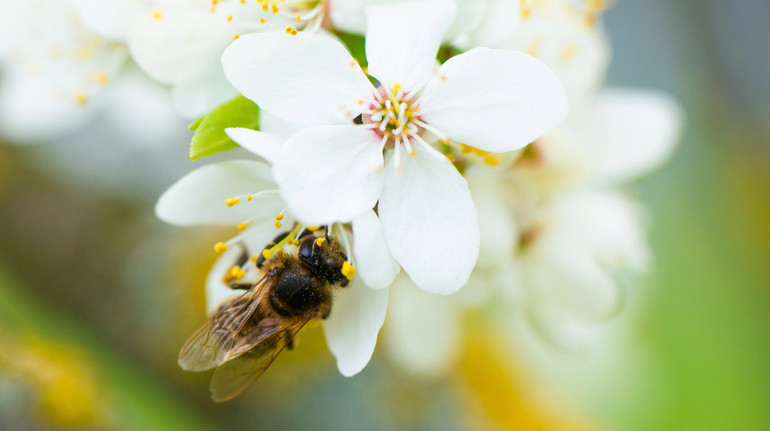Scientists have named the factors that harm the bees around the world

Scientists have named 12 threats to pollinators around the world
Yarkovoy/depositphotos
War in Ukraine, light pollution and microplastic are major problems that are jeopardizing the future of bees around the world. Scientists warn that it is not only an environmental problem, but also the issue of human food security.
In a new one report Reding University (Emerging Threats and Opportunities for Conservation of Global Pollinators), scientists have made a list of 12 most dangerous new threats to bees and pollinators that will grow over the next decade, writes The Guardian.
First and Scientists have called the war in Ukraine the main problem. Armed conflicts affect agriculture: the variety of cultivated crops is reduced, which deprives pollinators of access to flowers during the season.
”This is not just a threat to nature. Pollinators are the basis of our food systems, economics and adaptation to climate change changes« , – said Professor Simon Potts, author of the report.
The second reason is contamination with microplasty. 315 bee colonies throughout Europe revealed the proportions of synthetic polymers-for example, Petal plastic. It penetrates honey and hives, but its impact on the health of bees has not yet been fully studied.
Pollinators also harm Light pollution. Yes, night pollinators are 62% less likely to visit flowers in areas where street lights are installed.
Antibioticswhich are used in agricultural production, get into the hives and affect the behavior of bees: reduce their activity and change the routes of food search.
Researchers also warn of pesticide cocktails – chemical combinations can be more dangerous than each substance separately.
Also in the list – poorly planned planting of trees to achieve zero emissions, air pollution, use of closed agriculture, production of heavy metals, forest fires and more.








:format(webp)/s3/static.nrc.nl/wp-content/uploads/2024/08/30164356/data121029017-2df8a9.jpg)